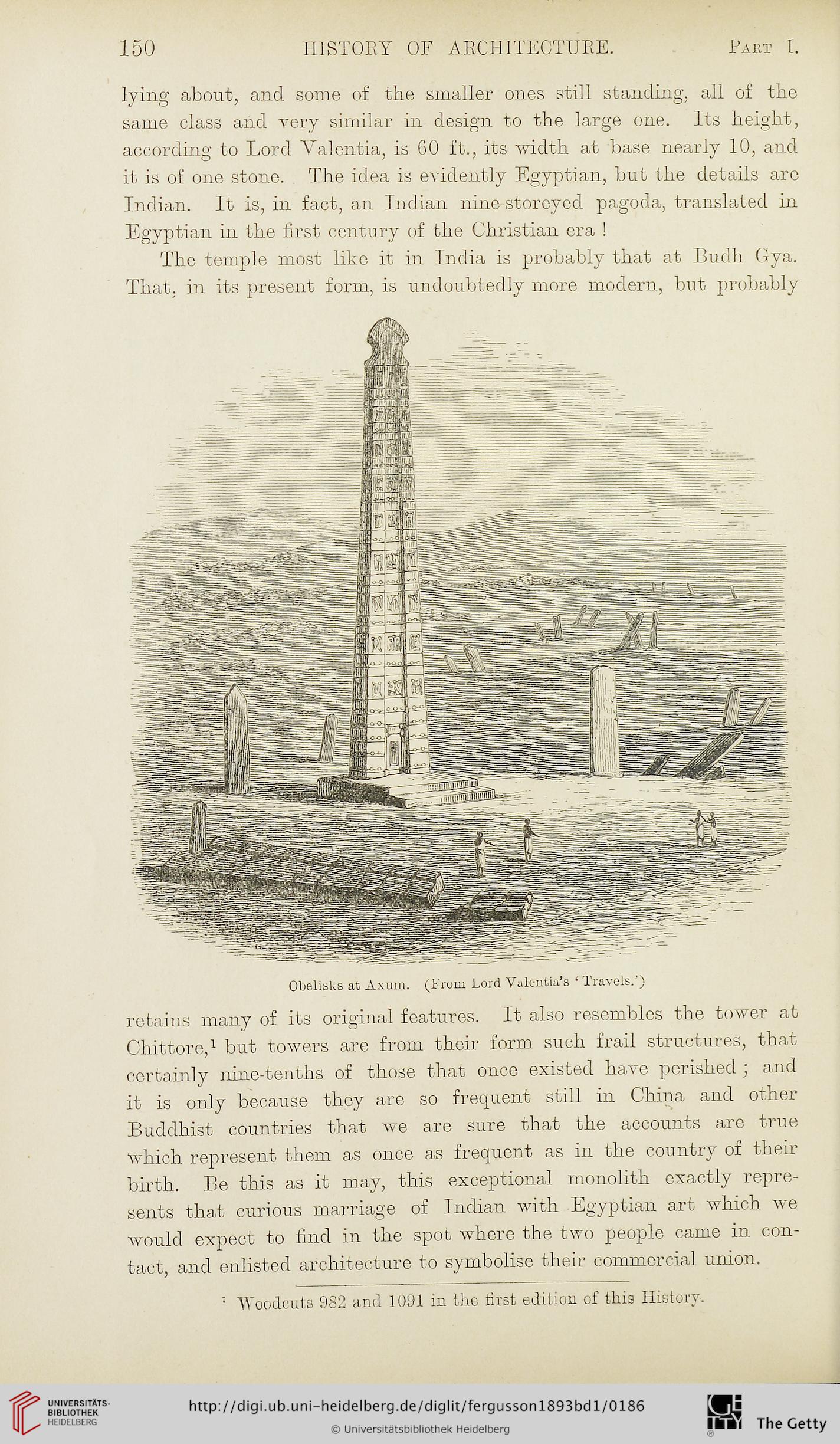150 HISTOEY OF ARCHITECTBRE. Part T.
lying about, and some of the smaller ones still standing, all of the
same class and very similar in design to the large one. Its height,
according to Lord Yalentia, is 60 ft., its width at base nearly 10, and
it is of one stone. The idea is evidently Egyptian, but the details are
Indian. It is, in fact, an Indian nine-storeyed pagoda, translated in
Egyptian in the first century of the Christian era !
The temple rnost like it in India is probably that at Budh Gya.
That. in its present form, is undoubtedly more modern, but probably
Obelisks at Axurn. (b'rum Lord Vulentia’s ‘ Travels.')
retains many of its original features. It also resembles the tower at
Chittore,1 but towers are from their form such frail structures, that
certainly nine-tenths of those that once existed have perishecl j and
it is only because they are so frequent still in China ancl other
Budclhist countries that Ave are sure that the accounts are true
which represent them as once as frequent as in the country of their
birth. Be this as it may, this exceptional ruonolith exactly repre-
sents that curious marriage of Indian with Egyptian art which we
would expect to find in the spot where the two people came in con-
tact, ancl enlisted architecture to symbolise their commercial union.
: WoocLcuts 982 and 1091 in the tirst edition of this History.
lying about, and some of the smaller ones still standing, all of the
same class and very similar in design to the large one. Its height,
according to Lord Yalentia, is 60 ft., its width at base nearly 10, and
it is of one stone. The idea is evidently Egyptian, but the details are
Indian. It is, in fact, an Indian nine-storeyed pagoda, translated in
Egyptian in the first century of the Christian era !
The temple rnost like it in India is probably that at Budh Gya.
That. in its present form, is undoubtedly more modern, but probably
Obelisks at Axurn. (b'rum Lord Vulentia’s ‘ Travels.')
retains many of its original features. It also resembles the tower at
Chittore,1 but towers are from their form such frail structures, that
certainly nine-tenths of those that once existed have perishecl j and
it is only because they are so frequent still in China ancl other
Budclhist countries that Ave are sure that the accounts are true
which represent them as once as frequent as in the country of their
birth. Be this as it may, this exceptional ruonolith exactly repre-
sents that curious marriage of Indian with Egyptian art which we
would expect to find in the spot where the two people came in con-
tact, ancl enlisted architecture to symbolise their commercial union.
: WoocLcuts 982 and 1091 in the tirst edition of this History.




